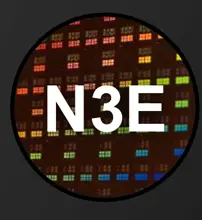Doesn't seem to be the case when a bunch of posts itt just a couple pages ago were asking and/or thinking that would be reality.
Your “keeping others in check” post added absolutely nothing.
Nor did your reply? or the other 100+ posts where people weren't even on-topic here. eg: upcoming title speculation on a hardware thread or the ones where users made a dedicated post just to say they're lost in the tech discussion because they aren't knowledgeable in the field.
Unlike the Steam Deck which is meant to run stuff designed for PC which creates images at about every conceivable resolution, Switch has always been a fixed platform. Games are either going to be providing a 720p image in portable, or when docked a 1080p image that the system then scales to 480p or 720p if necessary. Even games that docked render at 540p still do their own scaling and have 1080p UI slapped on top, so the system isn't receiving a 540p image it can then do some generic scaling operation on. For taking unpatched Switch 1 games and outputting them at even higher resolutions, should be feasible.
First off, the switch in handheld mode outputs to the display a 720p image but the in-game render resolution for everything but the UI is nearly always a dynamic resolution within 300ish-500ish pixels or a fixed resolution below or equal to 720p.
In docked mode, you have the option to output to a TV a 480p, 720p or 1080p video signal but once again, the in-game resolution for everything but the UI is
always a dynamic res within (in this case) 400~900p or in case of some really lightweight 2D titles, a fixed higher resolution that caps out at 1080p.
If you actually saw the FSR yt video I sent on that post, you'll see that the in-game UI is not an issue for the FSR functionality on the steam deck.
You said how the switch is limited compared to the steam deck or any PC in terms of resolution but you forgot to mention how that's related to
output resolution; the switch can handle a myriad of
16:9 resolutions but also others that aren't within the
16:9 ratio the only issue being, the console is limited to outputting 16:9 video, so anything that isn't in 16:9 will be stretched or have black bars, depending on your monitor and it's settings.
So essentially yes, there's literally nothing preventing nintendo from utilizing FSR on games that don't support it to scale up the 480p or higher dynamic resolution to 1080p. Even if the dynamic res when scaled produces an image beyond 720p/1080p, the console would just downscale and fit it within a 720p/1080p video signal. Problem is, FSR struggles with lower resolutions but like the video I sent earlier showed, even using a 480p resolution as a base, it can produce decent enough results.
For taking unpatched Switch 1 games and outputting them at even higher resolutions, should be feasible.
If FSR is used or the new hardware consistently forces the upper limit of the game's dynamic resolution then yeah sure.





